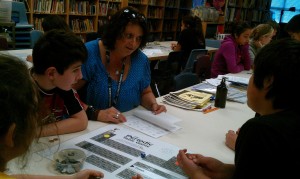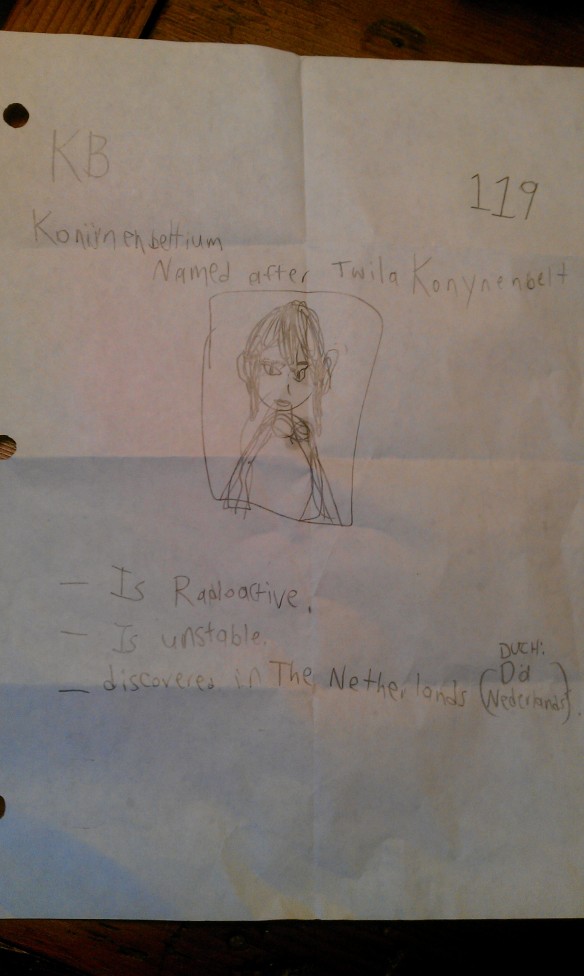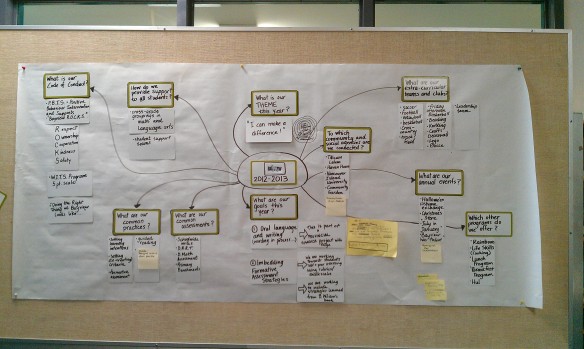“I think that I have a very strong, formal hand, but I like a certain amount of mess. That’s where life happens. That’s where birds can have habitat, where they can find shelter and food and water. So for me, having a landscape that is manicured and clipped to within an inch of its life isn’t as interesting because there’s not a lot of life there.” Margie Ruddick, award-winning landscape architect, quoted in Dwell, April 2014.
The year began a few weeks ago. Kids came pouring in through the front door, excited and noisy, happy to see friends and teachers. It didn’t take but a few seconds before someone said, “Indoor voices please!” and “Watch your language!”
And so began the reminders of what behaviours are expected at school. The establishment of routines begins day one, minute one.
To the uninitiated, routines often seem authoritarian and old fashioned. My brother-in-law, easy-going bachelor marine biologist, thought so. Several years ago, he had agreed to come and speak to my class about ocean animals. “I love kids,” he confided on our way to the classroom. “They have such natural curiosity and enthusiasm. No offense, but it’s really a shame how schools destroy that.”
I helped him set up his specimens at the front of the room, and when the kids arrived, introduced him.
“So,” he announced dramatically, “the first person up here gets to be my helper!”
There was a stampede. After several minutes, we finally had everyone settled back in their seats. Dave leaned over, wiped his brow, and said, “Could you PLEASE get me a coffee?”
I quickly went to the staffroom to grab a cup and hadn’t even poured it when I saw a student running down the hall with Dave in full pursuit.
“What the heck’s going on?” I said, sticking my head out of the staff room.
“The little *&@%$# stole my lobster!” he yelled. “Stuffed it down his pants! Then LIED about it!”
We managed to retrieve the lobster, but Dave’s perspective was forever altered.
“Kids are essentially evil,” he now maintains. (Uncle Dave is a bit dramatic. Granted, that WAS his favourite lobster.)
Consistent routines and expectations smooth the way for learning. But establishing those take time and patience.
I used to think I was quite good at creating routines. But then I taught an autistic child for two years. Every day, without expression or accusation, he would point out my every inconsistency:
“That is not how you asked us to line up two days ago.”
“On Tuesday, you said we had to sign out for the bathroom every time.”
“You said that only self-managers could be inside before school.”
“You said we could only sharpen pencils during recess.”
“Glenn should not go to the washroom now. It is not recess.”
“You said that our journals were due today.”
“You said that we were going to write in our planners every day.”
“You said ‘three strikes and you’re out.’ That is Fred’s fourth strike. And Susan has talked two times and she has no strikes. And people are still not signing out for the bathroom.”
I tried explaining that sometimes, in certain situations, under certain conditions, I needed to make exceptions. And that sometimes, I changed my mind. And that usually, I just forgot what I had said. This made him cry.
I began realizing that I wasn’t particularly effective at establishing protocols. Despite good intentions, I actually avoided practicing routines, resented the boring repetition, and often “switched it up” last minute in order to shortcut the process. I heavily depended on my relationships with kids to keep order in the classroom and then resented the kids when they didn’t respond quickly to that day’s directives.
When I started teaching in an inner city school, I quickly realized I would need to change my ways. Depending on personality was not sustainable–it was too emotionally draining. The students didn’t want to please me. They didn’t care what I wanted. They couldn’t be humoured into behaving.
Rock solid routines became essential to survival.
Now I try and establish routines the way that the authors of The Daily Five suggest: establish urgency, set criteria, make a chart, practice the right way, then the wrong way, then the right way, and practice some more. Do it again the next day. I find the use of anchor charts helpful (good reminders for me). And whether I feel like it or not, I make myself review the darn charts with the kids every day.
Does this mean that now everything is smooth sailing? Uh, NO. This Monday was horrific. Tuesday and Wednesday I thought I was really making headway .Then Thursday was a gong show. Kids were tired, noisy, unfocused, and edgy. Di d I mention irritable? I went home frustrated and exhausted, knowing beyond a shadow of a doubt that I was failing miserably and that my kids were unreachable. (I rounded off that evening by nagging my teenage son to complete his homework, eating some Chinese food my husband had picked up, and falling into bed at eight.) Friday, to my utter surprise, was a decent day.
What will it be on Monday? Probably really bad. Mondays are almost always bad. Students are often tired, hungry, out of sorts. Tuesdays are almost always better.
All I know is that every day I must work to establish routines so that students can find the calm to learn. Far from being straightjackets, established routines act like warm, tight blankets around kids. There will be plenty of time for creative mess later on.




